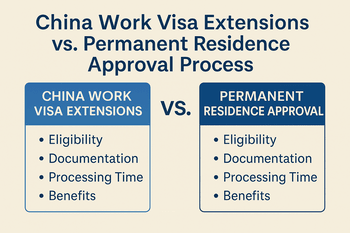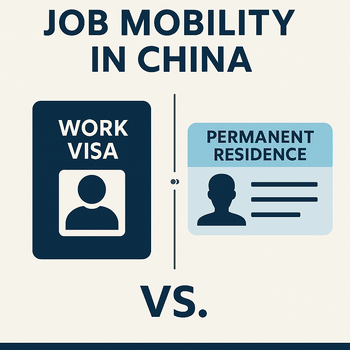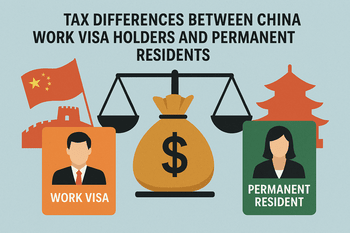
China’s high-speed rail network, known as the China Railway High-speed (CRH), is one of the most extensive and advanced in the world.
Spanning over 38,000 kilometers, it connects major cities like Beijing, Shanghai, Guangzhou, and Shenzhen, offering a fast, efficient, and comfortable way to travel.
Whether you’re a tourist or a business traveler, navigating this system can be straightforward with the right preparation.
This guide will walk you through everything you need to know, from booking tickets to boarding the train, and provide tips to make your journey seamless.
Understanding the High-Speed Rail Network
China’s high-speed rail network is divided into several main lines, with the Beijing-Shanghai and Beijing-Guangzhou lines being among the busiest.
Trains can reach speeds of up to 350 km/h (217 mph), significantly reducing travel times.
For example:
- Beijing to Shanghai: ~4.5 hours (compared to 12+ hours by regular train)
- Guangzhou to Shenzhen: ~30 minutes
To explore the full network, check out this interactive map of China’s high-speed rail.
Booking Your Tickets
There are several ways to book high-speed rail tickets in China. Here’s a breakdown of the options:
1. Online Booking
Booking tickets online is the most convenient method, especially for non-Chinese speakers.
Popular platforms include:
- 12306.cn: The official China Railway website (English version available).
- Trip.com: A user-friendly platform with English support.
- China Highlights: Offers ticket booking and travel services.
Steps for Online Booking:
- Visit the booking website or app.
- Enter your departure and arrival cities, travel date, and passenger details.
- Choose your preferred train and seating class.
- Provide your passport information for identification.
- Complete the payment using a credit card or other accepted methods.
- Receive a confirmation email or QR code for ticket collection.
Pro Tip: Book tickets as early as possible, especially during peak travel periods like Chinese New Year or Golden Week, when tickets sell out quickly.
2. Mobile Apps
Mobile apps like 12306 (official app) and Trip.com are excellent for booking and managing tickets on the go. The 12306 app is available in English and allows you to book, cancel, or change tickets directly.
Download the 12306 App: iOS | Android
3. Station Ticket Counters
You can also buy tickets at train stations. Major stations often have dedicated counters for foreign travelers with English-speaking staff. However, this method can be time-consuming, especially during busy periods.
4. Travel Agencies
Travel agencies can handle the entire booking process for you, including ticket collection and travel arrangements.
This is a good option if you prefer personalized service.
Collecting Your Tickets
If you book online, you’ll need to collect your physical tickets at the station. Here’s how:
- At the Station:
- Arrive at least 1 hour before departure.
- Locate the ticket collection counters, often labeled “取票” (Qu Piao).
- Present your booking confirmation (QR code or email) and passport.
- Collect your tickets and proceed to the departure hall.
- Self-Service Machines:
- Some stations have self-service machines, but these often require a Chinese ID. Foreign travelers are advised to use the ticket counters.
Navigating the Train Stations
China’s high-speed rail stations are large, modern, and well-equipped. Here’s what to expect:
1. Security Checks
All passengers must go through security checks at the station entrance.
Be prepared to:
- Have your bags scanned.
- Show your ticket and passport for ID verification.
2. Finding Your Gate
After the security check, look for electronic display boards showing:
- Train numbers
- Destinations
- Departure times
- Boarding gates
Signs are usually in both Chinese and English. If you’re unsure, ask station staff for assistance.
3. Waiting Areas
Stations have comfortable waiting areas with seating, restrooms, and shops.
Arrive at the waiting area at least 30 minutes before departure.
4. Boarding the Train
When boarding is announced:
- Proceed to your gate.
- Have your ticket and ID checked.
- Follow the signs to the platform. Staff are available to assist if needed.
On the Train
China’s high-speed trains are designed for comfort and efficiency.
Here’s what you need to know:
1. Seating Classes
- Second Class: Affordable and comfortable, with a 3-2 seat configuration.
- First Class: More spacious, with a 2-2 seat configuration.
- Business Class: Luxurious, with fully reclining seats similar to airline business class.
2. Amenities
- Air conditioning
- Clean restrooms
- Power outlets at seats
- Free Wi-Fi (on some trains)
- Onboard catering services
3. Luggage
- Overhead racks for smaller bags.
- Designated areas for larger luggage.
- Size Limit: 130 cm (length + width + height) and 20 kg weight limit per passenger.
4. Food and Drinks
- Purchase food and drinks from the onboard trolley service.
- Bring your own snacks or meals (stations often have shops and vending machines).
Arriving at Your Destination
1. Disembarking
Follow the signs to the exit. Keep your belongings secure, as stations can be crowded.
2. Transfers and Transportation
Most high-speed rail stations are well-connected to local transportation networks, including:
- Subways
- Buses
- Taxis
- Ride-hailing apps like DiDi (Download DiDi).
3. Ticket Retention
Keep your ticket with you, as you may need it to exit the station. Some stations have automated barriers that require you to scan your ticket.
Tips for a Smooth Journey
- Travel Light: Avoid bringing too much luggage to make navigating stations easier.
- Stay Informed: Check your train’s status and platform information regularly, as changes can occur.
- Respect Local Customs: Queue politely and speak softly on the train.
- Plan for Peak Times: Avoid traveling during holidays if possible, as stations and trains will be crowded.
- Emergency Contacts: Have the contact information of your accommodation and a local friend or guide in case you need assistance.
Refunds and Changes
If you need to cancel or change your ticket:
- Visit the 12306 website or app.
- Refunds are available up to 2 hours before departure, but fees may apply.
- Changes can be made for a later train on the same day, subject to availability.
Conclusion
China’s high-speed rail network is a fast, efficient, and comfortable way to explore the country.
By understanding the booking process, navigating stations, and following the tips in this guide, you can make the most of your journey.
For more information, visit:
Whether you’re traveling for business or leisure, the high-speed rail system offers an unparalleled travel experience across China.



